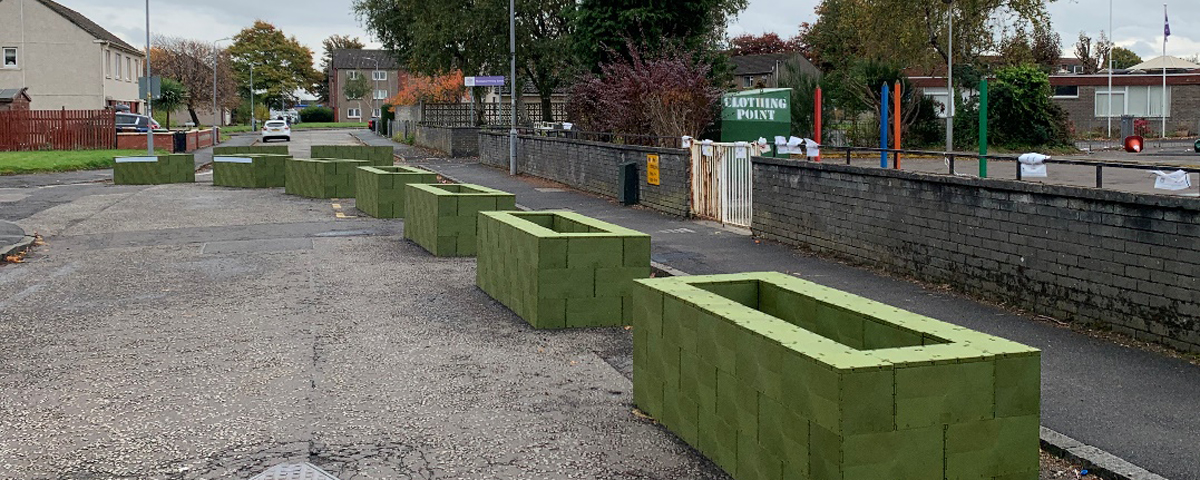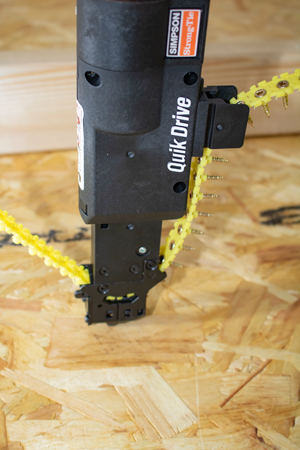Cladmate Cladding Support Systems are a long term manufacturer of Aluminium & Steel Rainscreen cladding support systems. Family owned since its conception, the family has been involved in the construction industry stretching back 3 generations. Cladmate are part of a larger group of companies called KNT Group, who specialise in a variety of building materials & building chemicals.
Cladmate currently offers a variety of Rainscreen Cladding Support Systems which can be teamed with materials such as Aluminium, Terracotta, Zinc and Brick to name just a few. They also offer systems that compliment your desired design intent including face fixed, structurally bonded and secret fixed.
Brick facades are brought into 21st century with innovative modern lightweight solutions utilising their extensive knowledge of the cladding industry. Cladmate offers two systems; CMS30: Adhesively bonded brick slip system, and CMS40: Mechanically fixed brick slip system – both of which are aimed at the professional cladding market.
The flagship brick product is their CWCT certified CMS40 Mechanically fixed brick slip system, where A1 Fire Rated Aluminium brackets and rails (vertical & horizontal) are fixed to your desired substrate, and grooved brick slip of your choice is slid onto the rails. As brackets and rails are fixed to the substrate mechanically, CMS40 can be used at any height. Pointing is then carried out using the excellent Terrabond T-Point high performance flexible pointing mortar. Though any brick slip can be used with this system, Cladmate also offers a standard range of brick slips, information of which is available upon request.

As mentioned Cladmate are part of a larger form of companies, thus granting access to innovative building products such as the latest in Insulation Technology, Building Chemicals, Bricks and Bricks Slips. There is also a stockist of industry recognised names such as Sika & Ejot, all of which are available to buy on their new online shop (shop.cladmate.co.uk). With the ability to provide their customers with all things Rainscreen, Cladmate is fast becoming the go-to for all your cladding needs.
Cladmate offers full static calculations along with Wind and U-value calculations, all of which are free of charge. Register your project on their website and they will ensure a 5 working day turnaround on calculations to avoid delays in your project. All calculations are backed by a warranty, information of which is available upon request.
Over the coming year, the focus will be to continue developing existing customer relationships and look to increase current manufacturing capacity to meet the pipeline at present. They will also be developing new technologies to ensure that they continue to be at the forefront of the exciting Rainscreen Cladding market.
After working throughout Europe, the Middle East & Africa over the past 20 years, 2 years ago the company decided to enter the UK market. Since then, Cladmate have gone from strength to strength and are fast becoming a major player within the cladding industry. Cladmate have worked on multiple projects around the UK, and have worked hard to gain industry accreditation and all relevant testing. They have deliberately taken their time to become familiar with the UK market in order to understand the needs within the cladding sector. Their aim is to create a company that is sustainable in the years to come – meeting both the needs of their clients, and industry regulations.
NON-COMBUSTIBLE STONE WOOL INSULATION
TERRAWOOL
 Terrawool are one of the main brands of Terra Building Materials and is proud of being a part of the group companies. Having been in the construction industry for three generations, they have an excellent track record.
Terrawool are one of the main brands of Terra Building Materials and is proud of being a part of the group companies. Having been in the construction industry for three generations, they have an excellent track record.
Terrawool stone wool slabs are premium insulation board composed of mineral wool and made up of thousands of fibres. Terrawool is made from volcanic basalt rock. Simplified recreation starts with reheated and melted volcanic rock within a large furnace of up to 1,500˚C (2,700˚F). The liquid rock is channelled into a chamber where it is spun into fibrous strands. Balance density systems are highly engineered throughout its design, accommodating slight imperfections on substructures, while allowing robust fixing. The breathable open-cell structure of Terrawool stone wool slabs allows water vapour to pass through, while factory-applied water repellent fibres on Rainclad and Dimclad prevent water transmission through the insulation layer.
All Terrawool insulation boards have achieved a Euroclass rating of A1 for non-combustibility. Terrawool insulation goes the extra mile to offer complete assurance against the threat of fire. With its ability to withstand temperatures of up to 1,000˚C (1,800˚F) Terrawool insulation helps to effectively contain and prevent the spread of fire. Likewise, the stonewool will not produce any toxic smoke or emissions.
Terrawool insulation is the superior choice for all construction needs, especially for high-rise structures. It offers high thermal insulation as well as acoustic performance. The open porous structure of Terrawool insulation absorbs and reduces the impact of sound, while providing a high thermal performance.
RAINCLAD

High Performance non-combustible thermal and acoustic insulation for cladding applications.
Rainclad is non-combustible cladding insulation designed and developed by our highly experienced engineers for best performance for all cladding applications. Rainclad is designed for use of ventilated or non-ventilated cladding systems as well as sealed systems such as curtain walling, external wall insulations at any height. With the factory-applied water repelling agent, Rainclad prevents water ingress during construction.
Rainclad is an A1 rated non-combustible product suitable for use on any type of building including those over 18m – giving a significant acoustic performance to a project. Rainclad insulation boards are made of stone wool fibres with special water repelling agent – this does not effect the breathability of the walls thus limiting condensation. The densitiy of Rainclad is 60kg/m3 and it has a 0,035W/mK thermal conductivity level (available in different thicknesses and densities
DIMCLAD
High Performance non-combustible thermal and acoustic insulation with black tissue facing for open-joint cladding systems and shadow gaps at any height.
Dimclad cladding insulation has been specifically engineered to promote fire safety and overall high performance. Along with being compatible with a number of different cladding attachment systems, Dimclad provides extra wind protection for optimal efficiency on high-rise buildings.
For open-joint cladding systems, Dimclad is the perfect solution due to its black mineral fibre facing. This feature is engineered to deliver UV stability in the long-term thus increasing its thermal performance.
In the event of being directly exposed to fire, Dimclads non-combustible feature reduces the risk of toxic gas emissions and spreading flames, therefore protecting the building. The factory-applied water repelling agent promotes Dimclad for use in construction during rainy weather, which prevents water ingress and avoids delays. Dimclad’s moisture resistance helps maintain an adequate insulating value for an extended period of time. The densitiy of Dimclad is 60kg/m3 and it has a 0.039W/mK thermal conductivity level (available in different thicknesses and densities).
For more information on Rainclad and Dimclad high-performance external insulation slabs, along with insights to the full range of Terrawool non-combustible solutions for any kind of stone wool insulation, please visit
www.terrawool.co.uk






 Terrawool are one of the main brands of Terra Building Materials and is proud of being a part of the group companies. Having been in the construction industry for three generations, they have an excellent track record.
Terrawool are one of the main brands of Terra Building Materials and is proud of being a part of the group companies. Having been in the construction industry for three generations, they have an excellent track record.
 While it’s well known that screws provide a tighter grip power by pulling the boards together, fitting 6mm plywood to underlay has long presented a dilemma. The conventional 25mm timber screws used to fasten flooring carry a risk of damaging underfloor electrical cables or puncturing water pipes, with potentially dangerous and costly consequences, however the alternative use of 19mm nails can cause the plywood subfloor to lift from the floorboards.
While it’s well known that screws provide a tighter grip power by pulling the boards together, fitting 6mm plywood to underlay has long presented a dilemma. The conventional 25mm timber screws used to fasten flooring carry a risk of damaging underfloor electrical cables or puncturing water pipes, with potentially dangerous and costly consequences, however the alternative use of 19mm nails can cause the plywood subfloor to lift from the floorboards.
